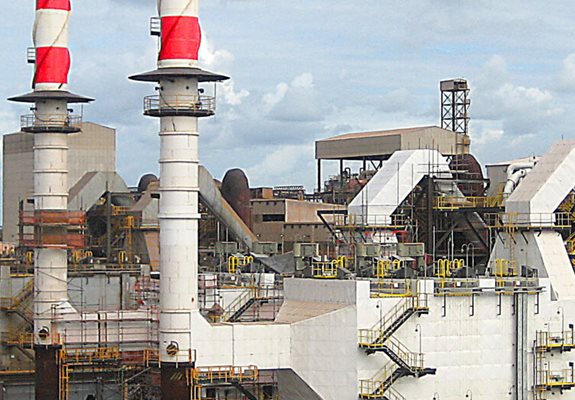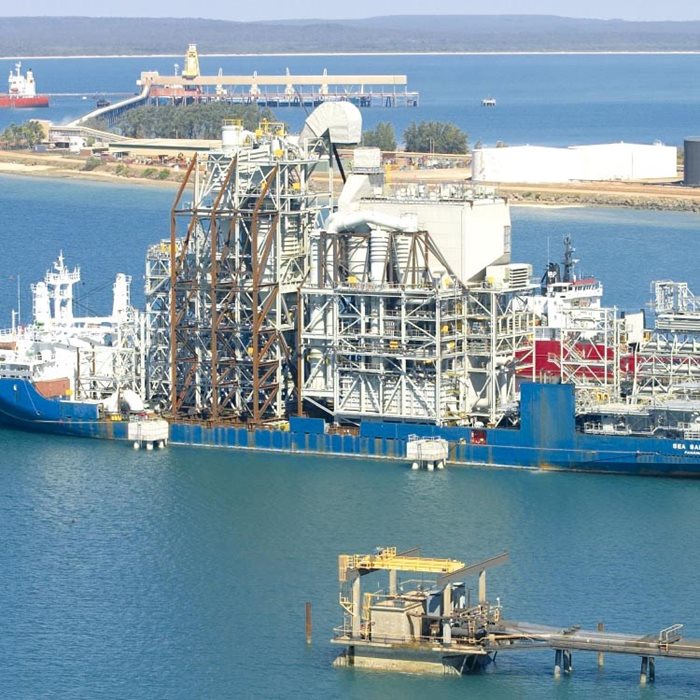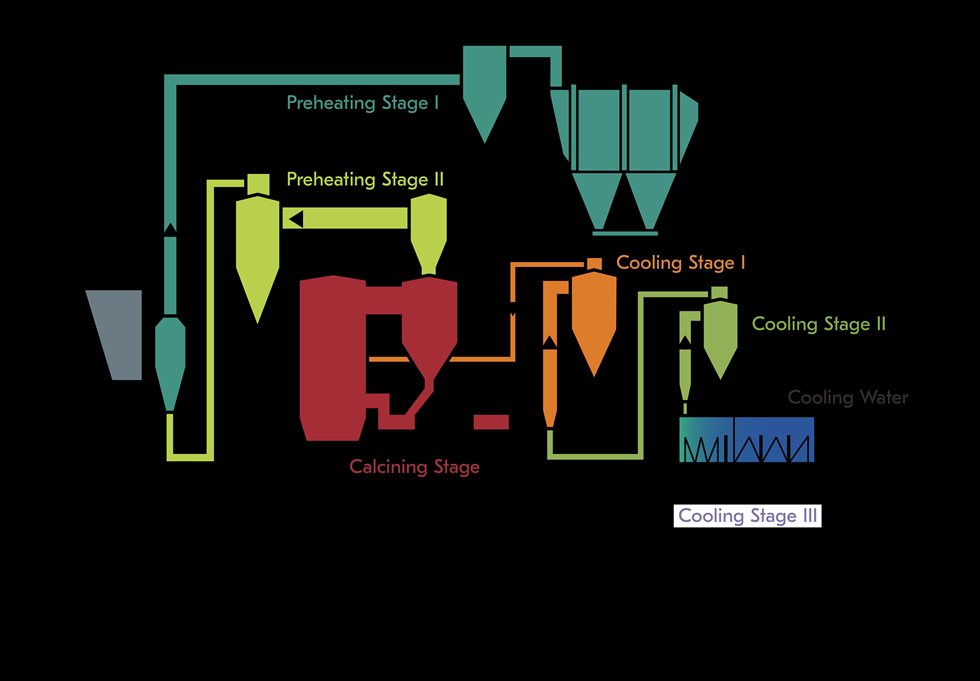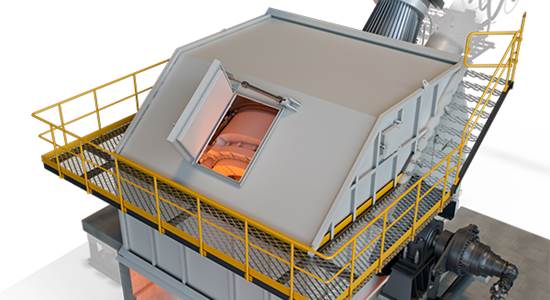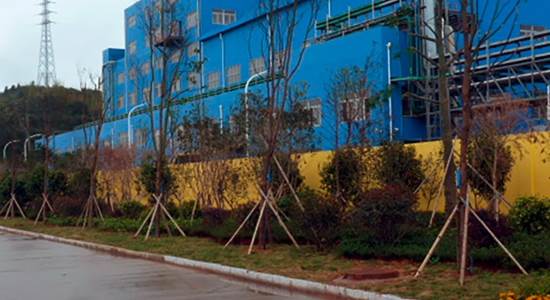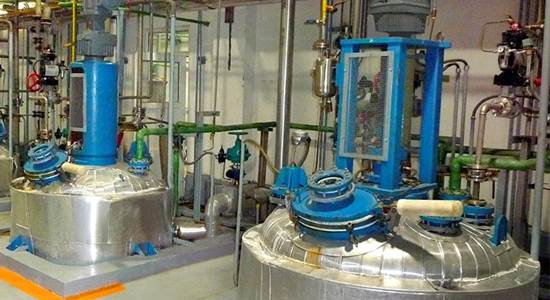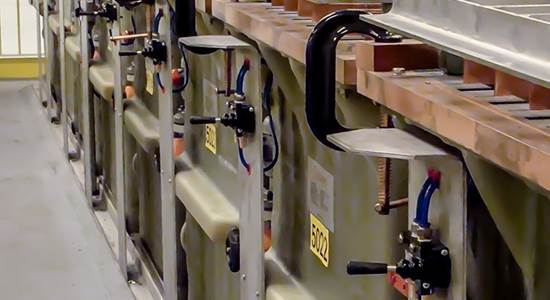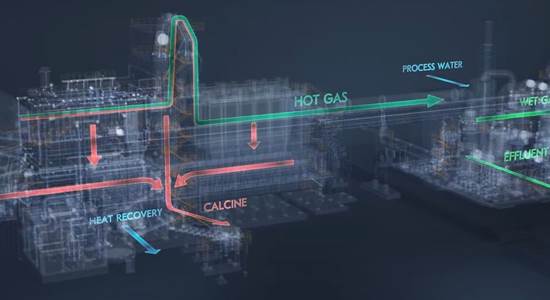The purpose of the calcination plant is to produce Smelter (also termed Metallurgical) Grade Alumina (SGA/MGA) from a precipitated aluminium trihydroxide feedstock (referred to as gibbsite or hydrate). In the calciner, the washed and filtered hydrate is dried, dehydrated and calcined to the required alumina quality.
The main components of the Circulating Fluidised Bed (CFB) calcination process are: Two preheating stages, a calcining stage and two cooling stages. The entire residence time from when the raw material is fed into the process to the point when the product is discharged from the end is approximately 20 minutes. CFB calciners typically operate in a range from 900 to 1000°C, depending on product quality targets.
The CFB calciner makes use of a multi-stage venturi preheating system to recover the waste gas heat by preheating and drying the gibbsite feed prior to reaction. The main calcination reaction is carried out in the CFB reactor. The energy for the calcination process is supplied by direct combustion of either oil or gas. Energy in the hot alumina is also recovered in a multistage cooling system (which includes a pair of cyclones and a fluidized bed alumina cooler). Some of the energy in the hot alumina from the CFB furnace can also be used to directly react part of the gibbsite from the first preheating stage (in a so-called ”hydrate by-pass” configuration). Another option for further energy recovery is to include a so called “hydrate dryer” in the arrangement, this unique and proven piece of equipment utilizes heat from the fluid bed cooler to pre-dry a part of the feed stream before it enters the calciner.
The CFB technology can be scaled up without consequences for product quality owing to the recirculation of solids in the CFB which results in an even temperature distribution and homogenous product quality also at large capacities and during load changes. The efficient use of heat exchange technology and the implementation of the hydrate by-pass, as well as the inclusion of a hydrate dryer brings the total energy consumption down to a world benchmark of less than 2.7 kJ per kg of alumina (LHV) produced.
Another key feature with the CFB calcination technology is the low emissions. Due to the unique flameless in-bed combustion system, and the recirculation of hot solids and resulting uniform temperature profile throughout the reactor system, the generation of thermal NOx can be kept at a minimum. The application of a staged combustion air supply and vigorous mixing of air, fuel and solids minimizes the formation of CO. As a result, the most stringent NOx and CO emissions limits can be met without expensive emissions abatement technologies. State of the art ESPs are used for final dedusting of the off gas, in order to meet the local environmental limits.
